KeyStep 37 is a new upgraded version of Arturia ‘s best-selling MIDI & CV sequencer equipped with many new features including a new chord mode, arp modes… here is my review
Arturia has today added another product to its beloved KeyStep range. After the flagship KeyStep Pro in April, it’s time for a more compact version with 37 keys. 5 mini-keys with velocity and aftertouch more than the original but a lot of other new features to discover.
Visually, it now has a panda/Stormtrooper-like design in white and black. Personally, I like it very much, especially because it gives KeyStep 37 a fresh and modern design. Ok, it’s not a black edition but the new contrast in the middle complements nicely with the classic white design. Thanks to a metal base-plate on the backside, it feels very solid. The classic “MiniBrute…” knobs have been replaced by new black knobs that can be operated better and more precisely.
Backside
On the back, a lot remains the same: classic MIDI input/output, cv/gate/pitch outputs, sync in/output, sustain pedal input & more. New is a handy on/ off switch, and a USB B connection. The latter replaces the unpopular micro USB port which is a very welcome update. It doesn’t come with a power supply but there is a socket for one. Alternatively, it can be powered with a classic USB charger.
A clever addition is a new USB hub that Arturia now adds to every box. Here you have one connector for the power and one for the computer. Very helpful especially for bigger setups like with hardware, iPad…
Upgraded Chord Mode & MIDI Controllers
Arturia has given the KeyStep 37 version a new display and four additional knobs. These are not only fully mappable MIDI CC knobs (4 banks x 4 knobs via the shift key) but also designed to control the new drilled out chord mode. In the original KeyStep, this was a very simple chord memorization function. The developers have now taken this relatively simple but helpful idea to another level. It now features 11 chord types plus a user chord so you can still use the classic chord memo function. Available are octaves, 5th, suspended, minor, and major with 7th, 9th, and 11th. These are selected via the first knob. The second knob then sets the number of notes within the chord going from 2 up to 16 notes.
The third knob is named Vel>Notes which adds velocity to the played notes. In easy words: the harder you play a key the more notes will sound up to the number set on the notes knob. An interesting creative function, but I think this is especially exciting for the really good keyboard players out there, less for the sequencer friends.
My personal highlight is the new strum function in the new chord mode that can be operated with the fourth knob. This allows you to strum synth chords like on a guitar. How and at what speed the notes are played can be set with the last black knob. It’s a lot of fun to experiment with this function. A bit shame, it doesn’t work on the CV outputs. Dear Arturia developers, maybe you can update this in the future.
New Arpeggiator Modes
Not only the chords have been improved also two arpeggiator modes have also been completely renewed. Besides the classic up/down/random… Arturia has added a new walk & pattern mode to it. Walk is a mode where the sequencer digitally throws a dice to decide whether to go forward or backward at the end of each step: there’s a 50% chance it will play the step, a 25% chance it will play the current step and a 25% chance it will play the previous step. It’s based on probability and reminds me a bit of the dice function from the MicroFreak Synthesizer. A very inspiring mode because it creates beautiful, unexpected variations.
The second mode is called Pattern which creates a new random pattern with up to 64 notes each time you hold some notes. You can change the length of the pattern the same way you can change the length of a sequence, by holding the record button and pressing the first 16 keys. Here I have to admit, this is one of the most inspiring arpeggiator modes I’ve played with. It generates very quickly useable patterns, melodies, and more. This will certainly not replace the classic arpeggiators or sequences, but can serve as a source of inspiration. Nice addition!
Effort Free Sequencing
In the sequencer section, there were unfortunately no innovations or improvements to the KeyStep 32. It still has a single sequencer track, 8-note polyphonic, and can go up to 64 steps. However, the Keystep 37 continues the tradition of classic step sequencers and effort-less operation: press record, play your notes including rests/ties, hit play and your sequence is done. It’s not magic, it just a good implementation. To do this, you don’t need to read a deep manual. Sequencing has never been easier since the first KeyStep. This can not only be done with classic hardware synthesizers, but it also works smoothly in DAWs and on iOS. If you like it more complex, you can simply program in chords (polyphonic sequencing) but always remember there is only one track, not 4 as with the KeyStep Pro
KeyStep 37 also includes all other handy functions of the original: transpose sequences, overdub them (great in poly mode)… The Keyboard Play, my all-time favorite function is also there again. With this, you can play alongside the sequence without effecting it but you can also change the MIDI channel of the part where the function is best. For example, you have a sequence running on Synth A and play a pad sound on Synth B. It’s a lot of fun and so you can also use the Keystep for two different sounds. Saving sequences have remained the same: these are saved in the arpeggiator mode knob that becomes storage for up to 8 sequences. It is often forgotten that the KeyStep also has storage space since it is more of an instrument where you enter the sequence in the jam. Handy, you press the shift key + turn the knob, you can skip other sequences without them triggering.
Don’t forget: in the MIDI Control Center software, you can edit sequences very easily, save and recall them. Plus you can set your Arturia KeyStep 37 the way you want it. Here you can also assign the right MIDI CC numbers to the 16 knobs (4 banks x 4 knobs).
Feature Overview
- 37 note slim keyboard with velocity and aftertouch
- 64-step sequencer with up to 8 notes per step
- 8 available patterns for the sequencer
- Sequences may be entered manually or recorded live with overdub or overwrite functionality
- Chord mode stores 12 different voicings, including a user assignable chord
- Strum mode offers velocity, note spacing, and note duration controls
- Scale mode quantizes the keyboard to specified scale
- 5 scale options available, including a user assignable scale
- BPM display
- 4 encoders offer 4 banks of MIDI CC controllers
- Connects with instruments over USB MIDI, 5-pin MIDI, 3.5mm analog clock I/O, and pitch, gate, and modulation CV output
- Touch-based pitch and mod wheels
- Includes Ableton Live Lite
KeyStep 37 Review
The Arturia KeyStep 37 is a great further development of the best-selling original. For me, it does not replace him but is a kind of twin brother with more features. For 169€ it is almost 70€ more expensive than the first KeyStep but offers more keys, more features, and good improvements: new chord mode, MIDI CC knobs, two new arpeggiator modes, MIDI CC knobs, and more. Actually what many wished for the first version. The 37 keys version carries on what makes the KeyStep almost priceless for electronic musicians: work quickly without getting lost in menus, many creative features, and a solid keybed with aftertouch packed in an affordable unit. Very helpful and a welcome add-on is the new small screen that gives you the tempo and values of the knobs. The same applies to the new LEDs above the keys which are super useful.
To be honest, there is little to criticize. Maybe the missing illuminated touch wheels we know from the KeyStep Pro. They are pretty useful because you often forget where the current position of the wheels is. For sequencer & CV Gate fans, 37 version can be a bit disappointing. There is no significant update for both functions. For example, 4 tracks of MIDI CC or CV modulations would have been extremely exciting. Programming would have been relatively easy with the help of the new four knobs. Or a kind of ratcheting function for the sequencer would be awesome. Let’s hope to see this in an upcoming update. The same applies, of course, to Ableton Link, an extremely useful technology that unfortunately only makes it in a few hardware devices.
Finally, one can say: the KeyStep remains a KeyStep in the 37 version, but expanded with useful new features and improved in various areas. For almost 80 € more you can get more of everything and I think it’s worth it.
Pro
- build-quality
- new design + display + LEDs
- new arpeggiator modes
- advanced chord modes
- MIDI CC controllers
- effort-free sequencing
- USB-B instead of micro USB
Neutral
- no Ableton Link
- ratcheting
Contra
- no significant updates for the sequencer
- chord strum not compatible with the CV output
Arturia KeyStep 37 is available soon for $199 USD.
More information here: Arturia

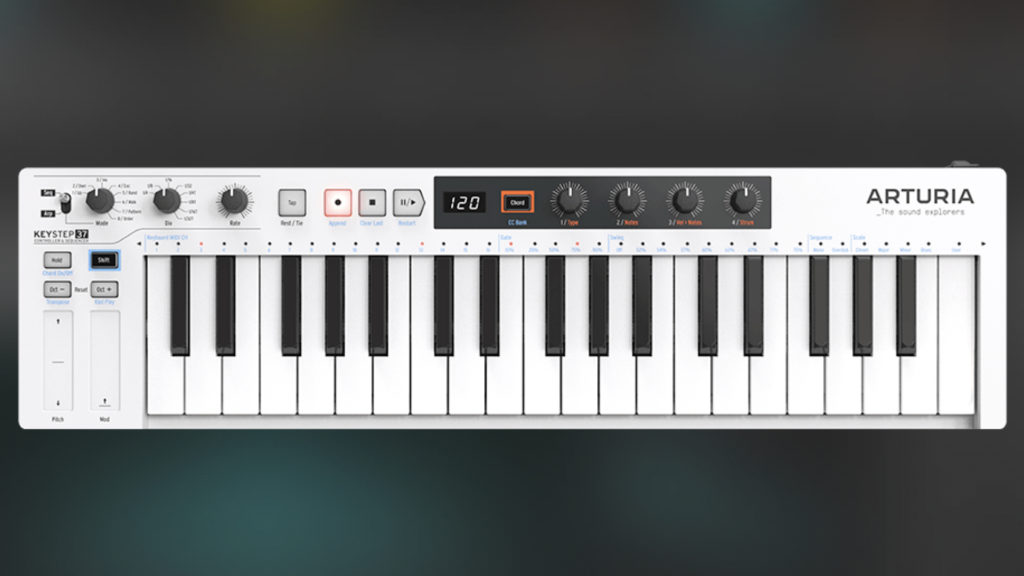

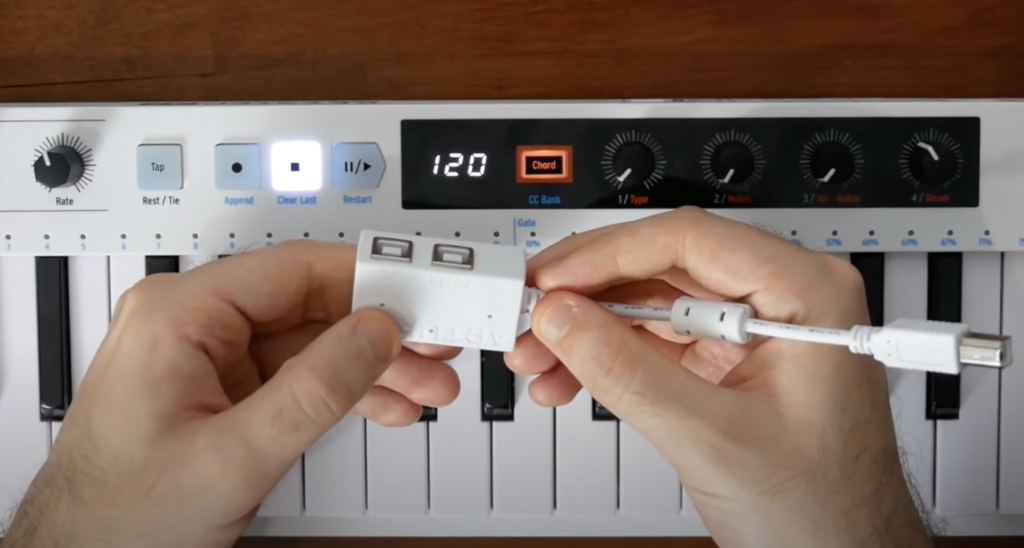


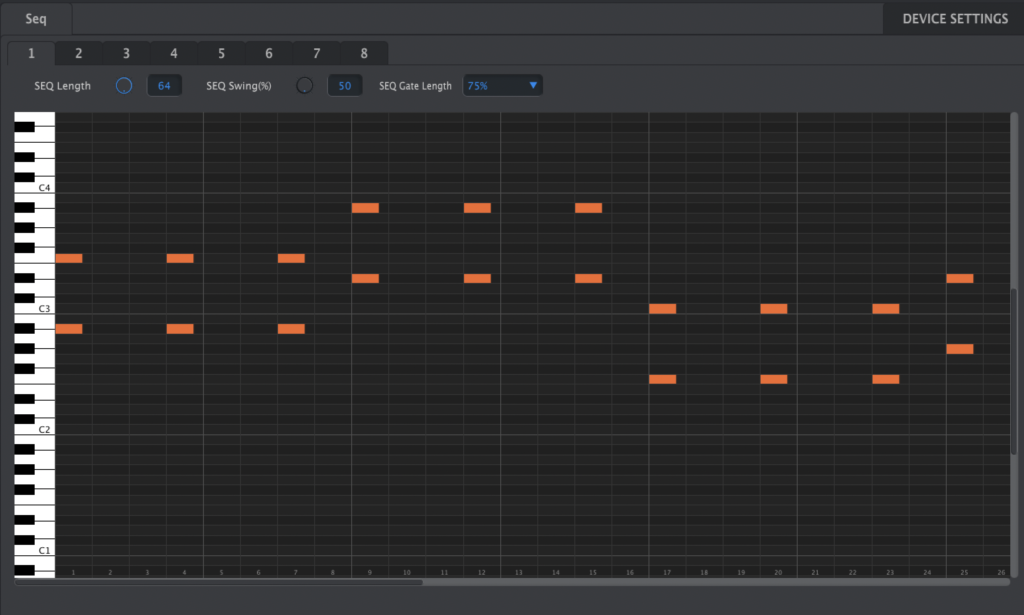
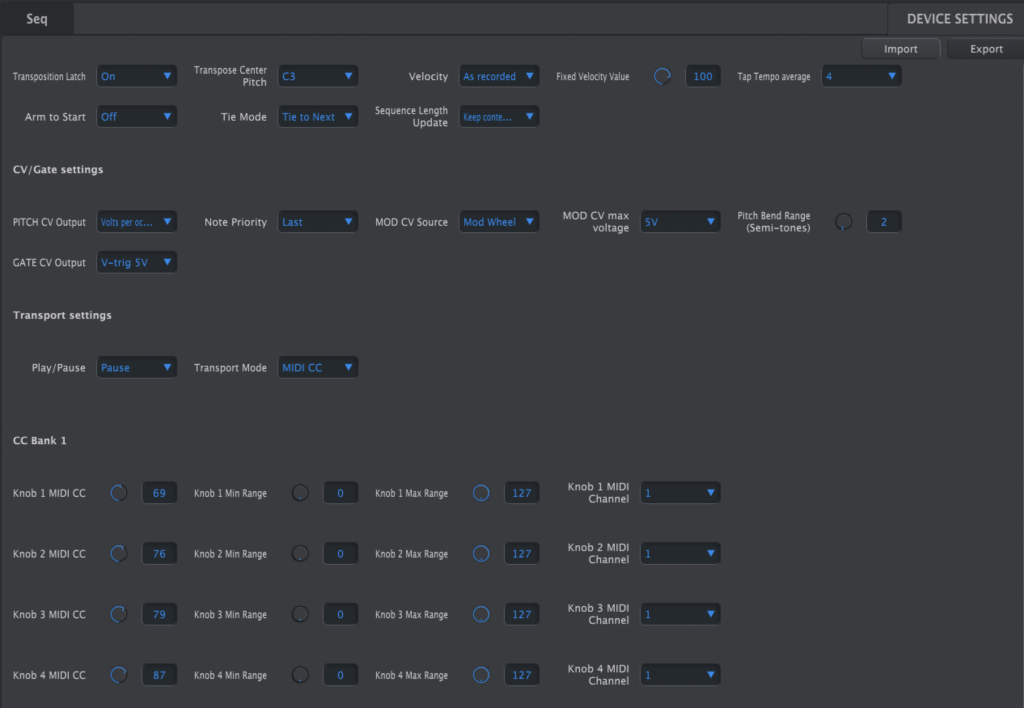

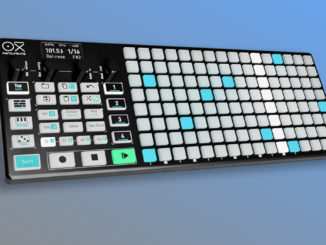

Be the first to comment